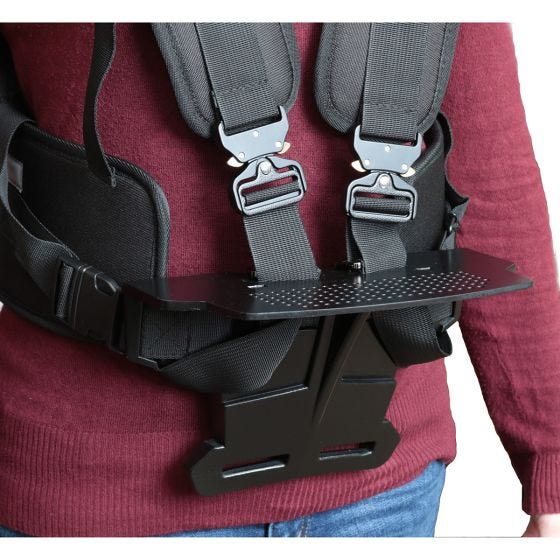Ergonomic Lifting Support

In stock
Backordered
Features and Benefits
• Secure snap lock closure for easy on and off
• Versatile adjustable straps to ensure proper fit
• Designed to promote proper carrying techniques for heavyweight items
• Reduce back pain and strain by distributing weight to hips and shoulders
• Velcro waistband provides lifting support
• One size fits most
• Can be worn while seated or driving
• Accessory tray easily slides on and off the harness
• Accessory tray for hands-free sorting and carrying of numerous smaller objects
Here are some heavy-lifting safety tips:
• Plan: Before lifting any heavy object, plan the lift carefully. Assess the weight of the object, the distance you need to carry it, and any obstacles in your path.
• Get help: If the object is too heavy to lift by yourself, ask for help. Do not be afraid to ask for assistance, especially if you are uncertain about your ability to lift the object safely.
• Use proper lifting techniques: When lifting an object, keep your back straight, bend at the knees, and lift with your legs. Hold the object close to your body and avoid twisting your back while carrying it.
• Wear appropriate clothing and shoes: Wear clothing that allows you to move freely and comfortably. Wear sturdy, non-slip shoes that provide good traction.
• Use lifting aids: Use lifting aids such as dollies, carts, or lift trucks whenever possible to reduce the amount of manual lifting required.
• Take breaks: Take frequent breaks if you are lifting heavy objects for an extended period. Resting allows your muscles to recover and can help prevent injuries.
• Know your limits: Be aware of your physical limitations and do not try to lift objects that are too heavy or awkward to lift safely.
• Communicate with others: If you are working with others, communicate clearly and effectively to ensure that everyone is aware of the plan and any potential hazards.
